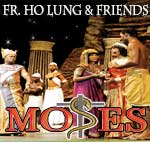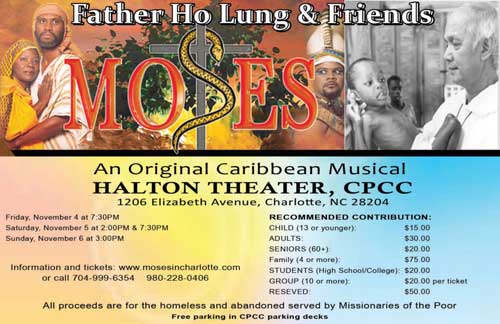 CHARLOTTE — Father Richard Ho Lung and the Missionaries of the Poor will bring their latest musical “Moses” to the Halton Theatre at Central Piedmont Community College Nov. 4-6.
CHARLOTTE — Father Richard Ho Lung and the Missionaries of the Poor will bring their latest musical “Moses” to the Halton Theatre at Central Piedmont Community College Nov. 4-6.
The original musical drama will feature lively Caribbean music, dancing, colorful costumes and powerful performances.
The Missionaries of the Poor serve those most in need in many countries worldwide. This musical is a critical fundraising event which helps provide much-needed resources to futher the mission of the Missionaries of the Poor.
For details and to purchase tickets, go to www.mosesincharlotte.com.
— Catholic News Herald

 Mary holds the Child Jesus in a 15th-century Florentine painting depicted on one of two religiously-themed Christmas stamps being issued by the U.S. Postal Service this holiday season.
Mary holds the Child Jesus in a 15th-century Florentine painting depicted on one of two religiously-themed Christmas stamps being issued by the U.S. Postal Service this holiday season.
The image was adapted from a work by an anonymous follower of artists Fra Filippo Lippi and Pesellino.
The original painting is in the collection of the National Gallery of Art in Washington, D.C. The stamp is now available at post offices. A second stamp depicting the Nativity in silhouette against the dawn sky was also released Nov. 3.
— CNS | U.S. Postal Service

